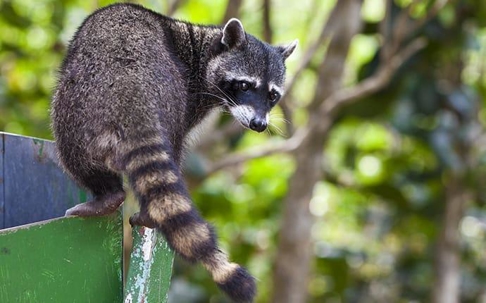When most people think of pests in Kittitas County, they think of insects. While insects pose a threat to your home and family, wildlife also poses a danger. Check out this guide to wildlife prevention and learn how to keep unwanted wildlife away from your property.
Common Wildlife In Kittitas County
There are several types of animals in Kittitas County that invade homes and businesses. Here are some pests that you might come across:
- California Gray Squirrel: A large species of ground squirrel, this rodent is mostly gray with white on its belly. Every squirrel has a small triangle-shaped patch of dark fur on its back.
- Chipmunks: Another rodent, the chipmunk is brown with black stripes on its back. They’re relatively small, measuring approximately six inches long.
- Douglas Squirrel: Compared to the California gray squirrel, the Douglas squirrel is small. It only grows to a total of about 12 inches long, which includes the tail. With brown fur and black-tipped tails, Douglas squirrels are easy to identify.
- Marmot: One of the largest house pests, the marmot grows to be the size of a cat and can be over ten pounds. They whistle loudly as a way of communicating.
- Raccoons: You can identify a raccoon by its black fur mask. With black and gray striped tails, raccoons are unlike any other wildlife in the area. They can grow to be three feet long.
How Can Wildlife Damage Your Home?
One trait that all of the animals above have in common is the ability to damage your home. Some animals burrow their way into homes, making your property vulnerable to water damage. Wildlife can also chew on wires and cause electrical problems or even fires. They also cause structural damage to homes.
Even if your home is unscathed, your personal property may experience damage. If you store prized possessions in your attic or basement, invaders could ruin them. They might chew up papers, or defecate or urinate on your property.
If you corner an animal invader, you could experience personal harm. A bite from a rodent leaves you vulnerable to disease. If you have wildlife on your Kittitas County property, there’s no way to guarantee that your home is safe.
Wildlife Pest Prevention Tips
Fortunately, there are steps you can take to protect your home. Follow these tips to safeguard yourself, your family, and your property:
- Remove Food: First, you can remove all potential food sources. Store your food with care and clean up crumbs whenever you can. You should also store all of your trash in tightly sealed containers. If food is inaccessible to wildlife, they won’t be as likely to enter your home.
- Keep A Clean Yard: Another way to keep wildlife away is to keep debris out of your yard. Don’t let junk accumulate and clean up debris piles. The cleaner your yard, the less likely you’ll encounter issues with wildlife.
- Limit Water Sources: Much like humans, animals need water to survive. They might make their way onto your property in search of water. By repairing leaky fixtures, fixing drainage issues, and emptying water bowls, you can limit their access to water.
- Seal Entrances: Think about how wildlife may enter your home. Do you have any holes or other possible entry points? Check the perimeter of your home for access points and do your best to seal them up. By doing so, you can make it harder for wildlife to invade.
- Hire An Expert: The last and most important tip is to contact an expert. If you’re looking to protect your home, you can count on us at Prosite. Call us today for assistance.

